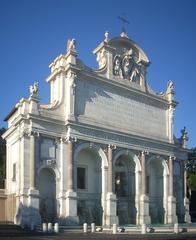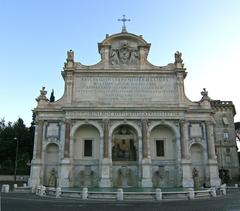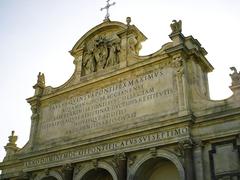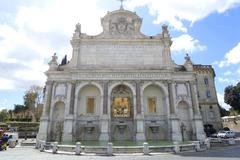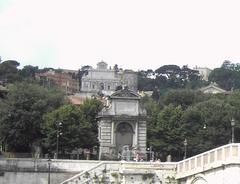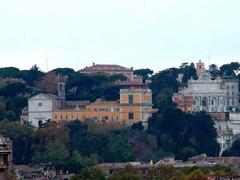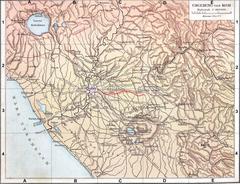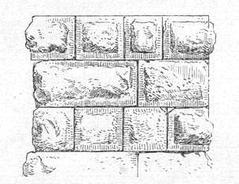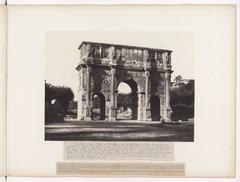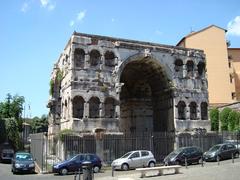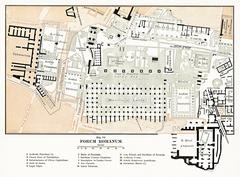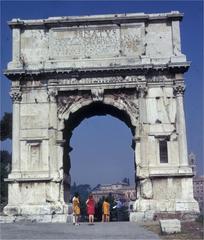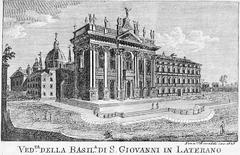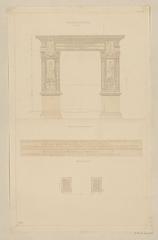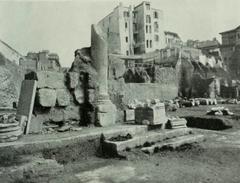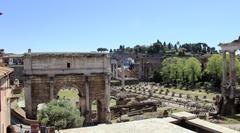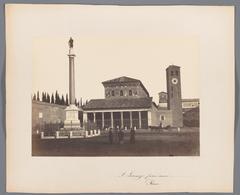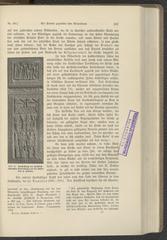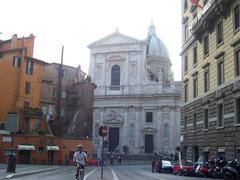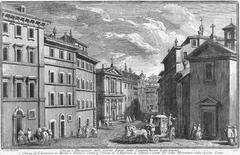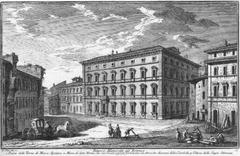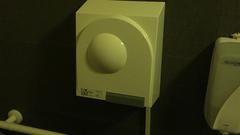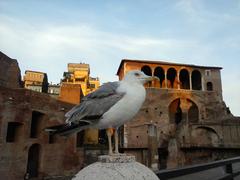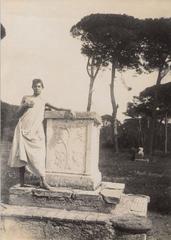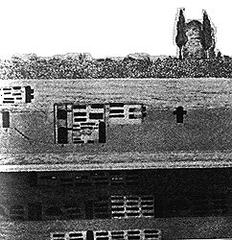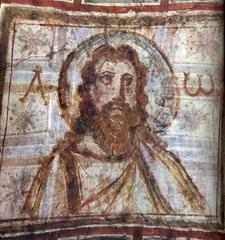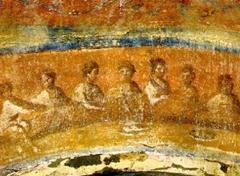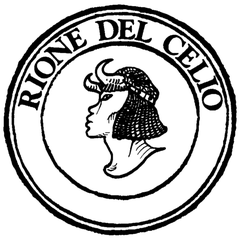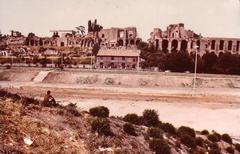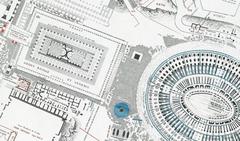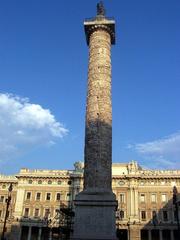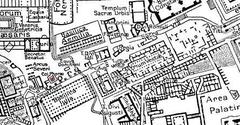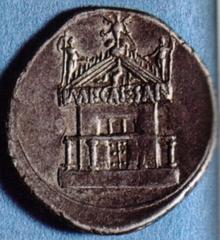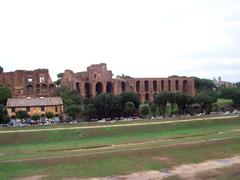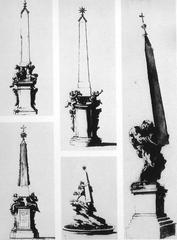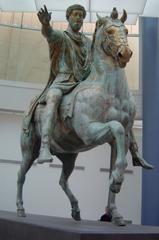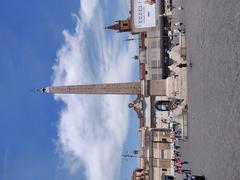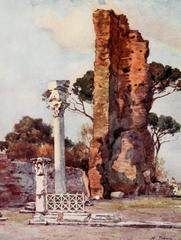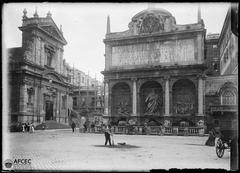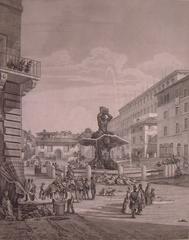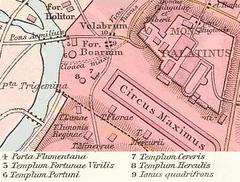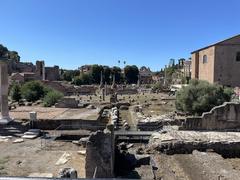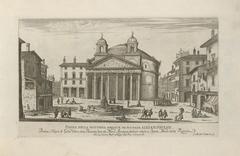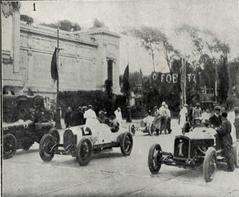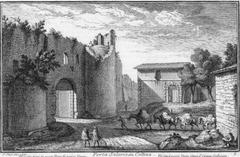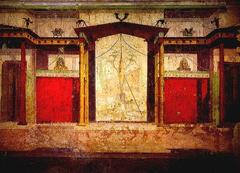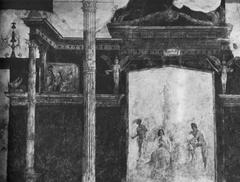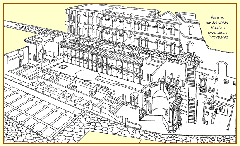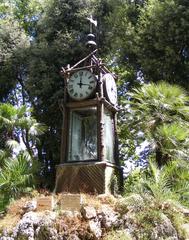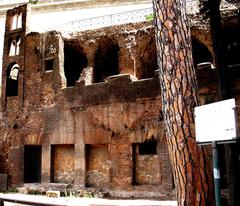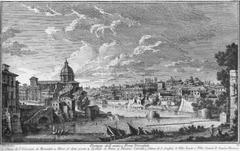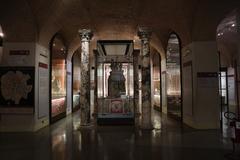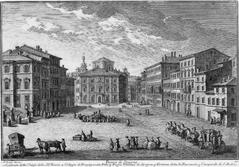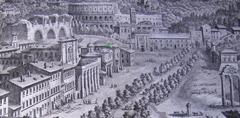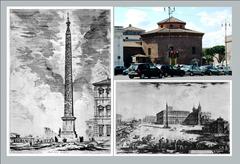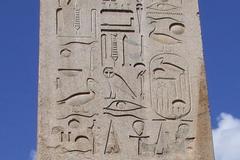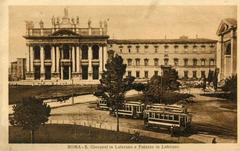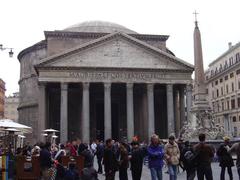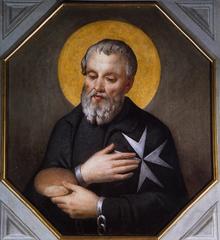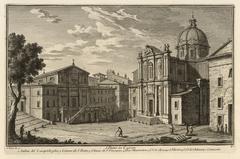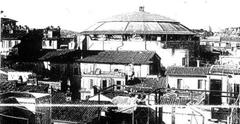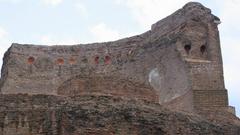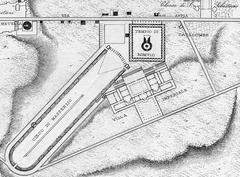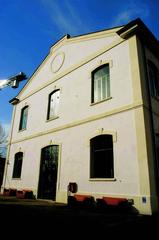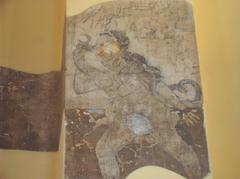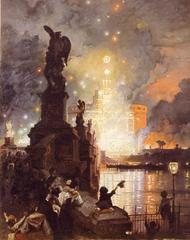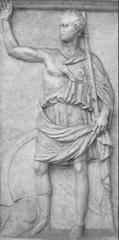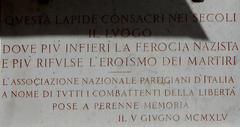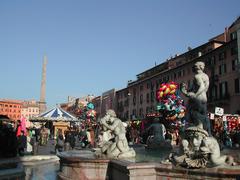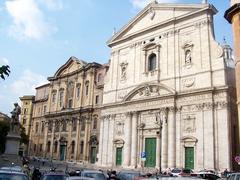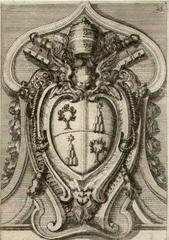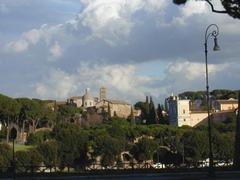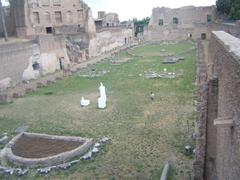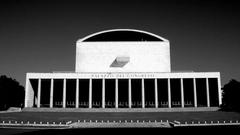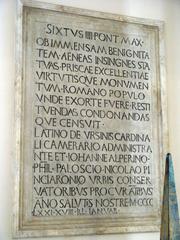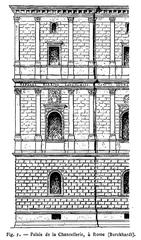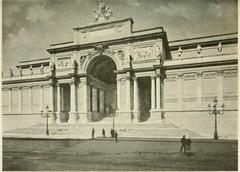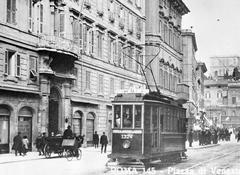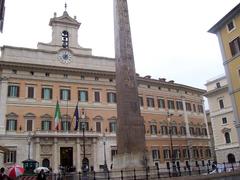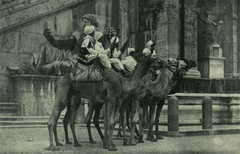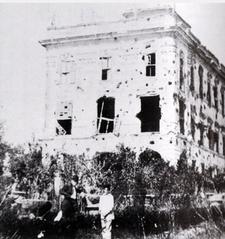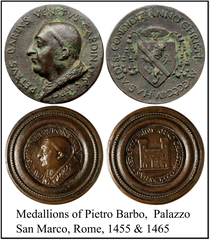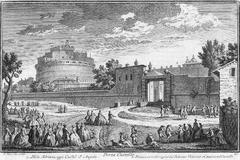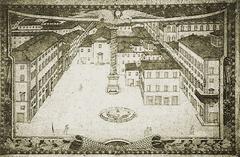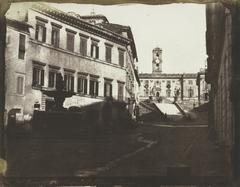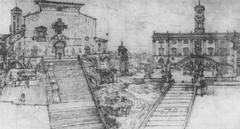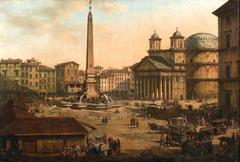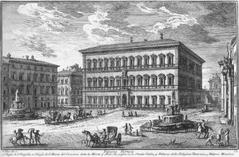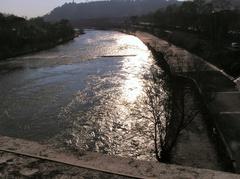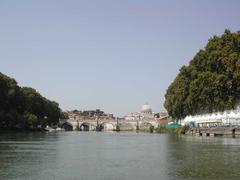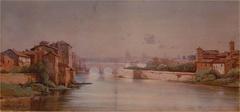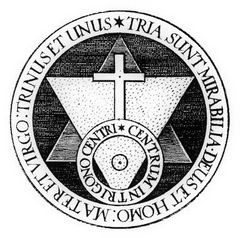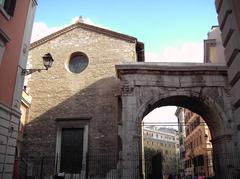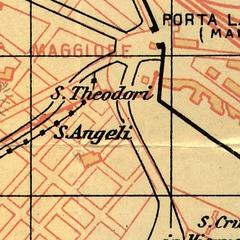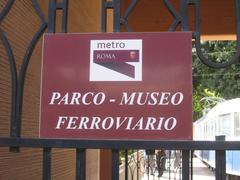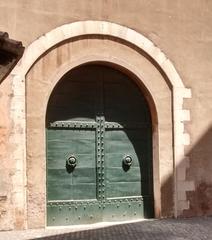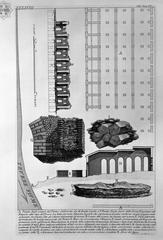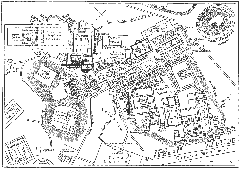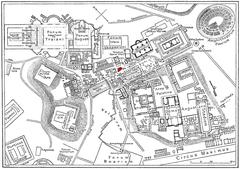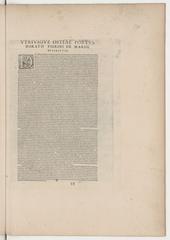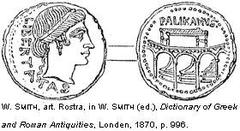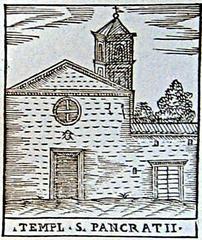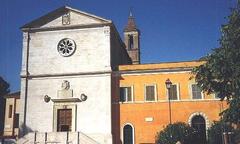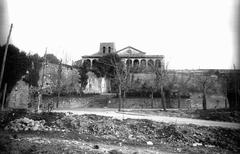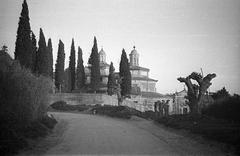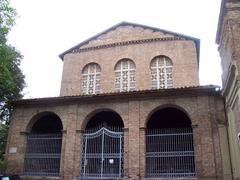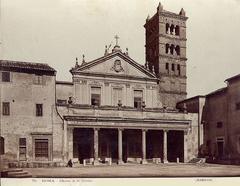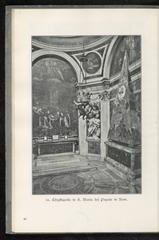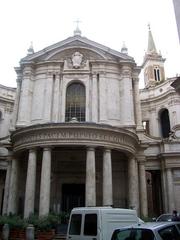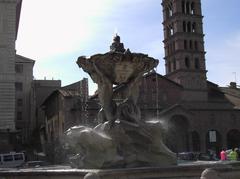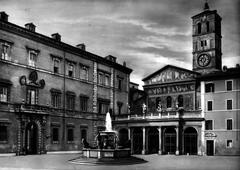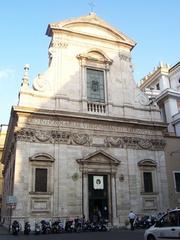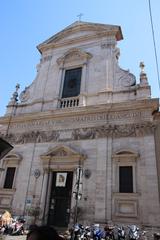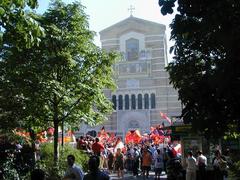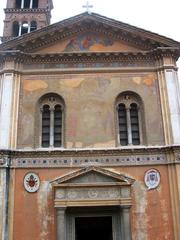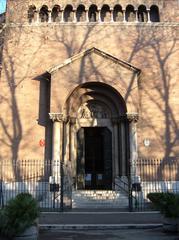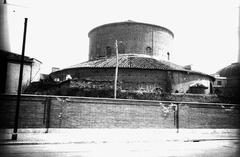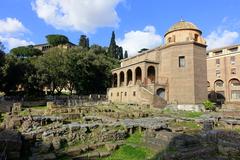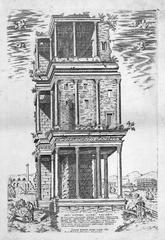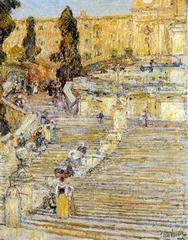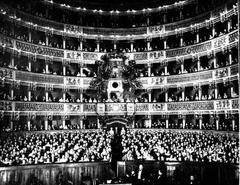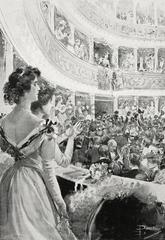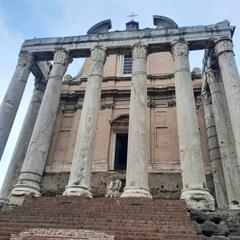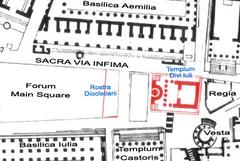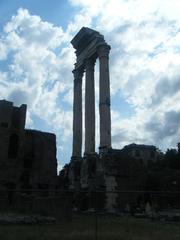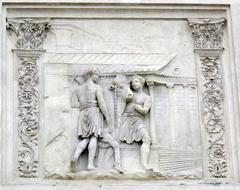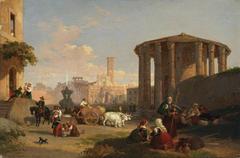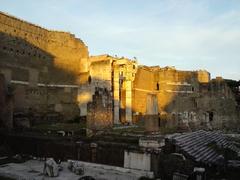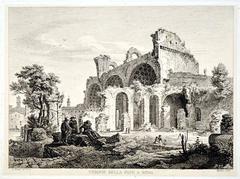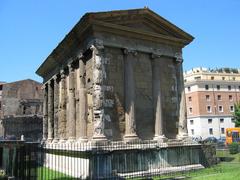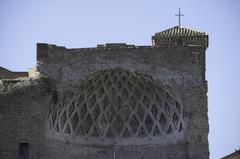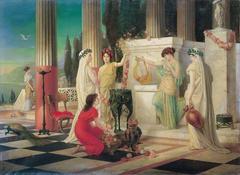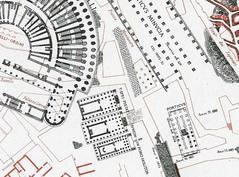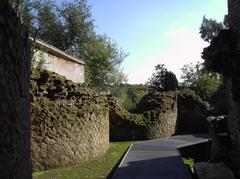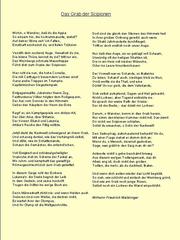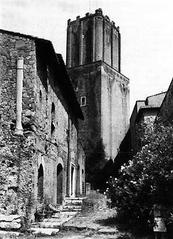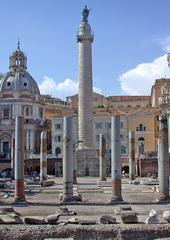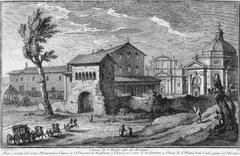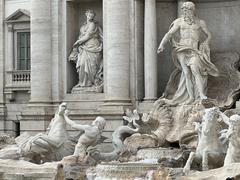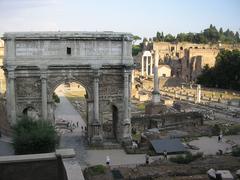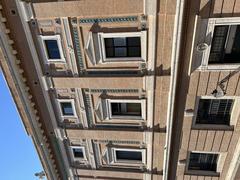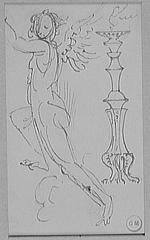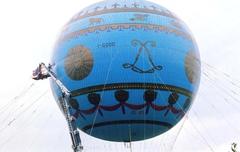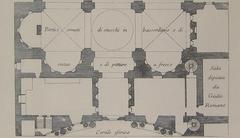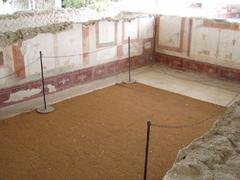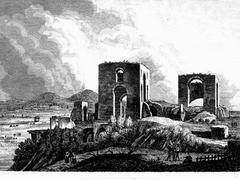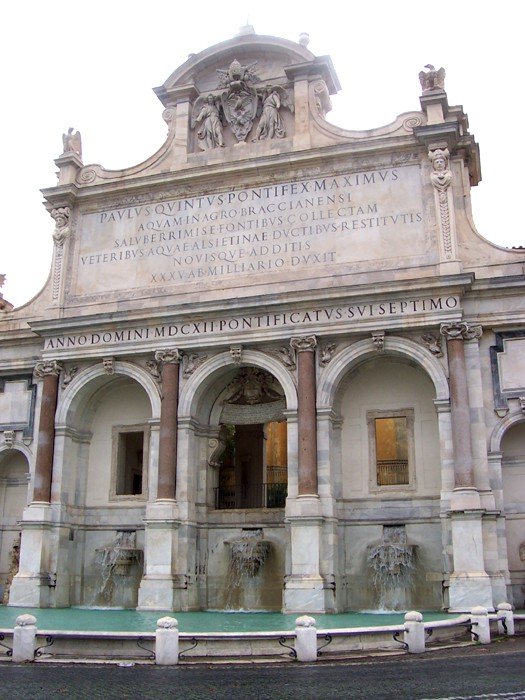
Fontana Dell’Acqua Paola Visiting Guide: History, Hours, Tickets, and Tips
Date: 18/07/2024
Introduction
The Fontana Dell’Acqua Paola, affectionately known as “Il Fontanone” or “The Big Fountain,” stands as one of Rome’s most iconic landmarks. Positioned on the Janiculum Hill, this monumental baroque fountain offers a glimpse into Rome’s historic ingenuity, cultural heritage, and architectural brilliance. Commissioned by Pope Paul V in 1610 and completed in 1612, the fountain celebrates the restoration of the ancient Aqua Traiana aqueduct, which was originally constructed in 109 AD by Emperor Trajan (Rome.net). The fountain’s grand design, featuring white and gray marble, intricate carvings, and statues, symbolizes the triumph of engineering and papal authority during the Baroque period. The Fontana Dell’Acqua Paola not only provided a much-needed water supply to the Trastevere district and the Vatican but also became a cultural and artistic icon, immortalized in various works of art and literature (ItalyGuides.it). This comprehensive guide will delve into the history, cultural significance, and visitor information for the Fontana Dell’Acqua Paola, ensuring you make the most of your visit to this remarkable site.
Table of Contents
- Introduction
- History of Fontana Dell’Acqua Paola
- Cultural Impact
- Visitor Information
- Restoration and Preservation
- Modern-Day Relevance
- FAQ
History of Fontana Dell’Acqua Paola
Origins and Construction
The Fontana Dell’Acqua Paola is a monumental fountain located on the Janiculum Hill in Rome, Italy. Its construction was commissioned by Pope Paul V in 1610 to celebrate the restoration of the ancient Aqua Traiana aqueduct, originally built by Emperor Trajan in 109 AD. The aqueduct was intended to supply water to the Trastevere district and the Vatican area, which had been suffering from water shortages.
The fountain was designed by Giovanni Fontana and Flaminio Ponzio, two prominent architects of the time. The construction was completed in 1612, and the fountain was inaugurated with great pomp and ceremony. The design of the fountain was inspired by the ancient Roman triumphal arches, symbolizing the triumph of engineering and the papal authority.
Architectural Features
The Fontana Dell’Acqua Paola is a grandiose structure, standing at approximately 10 meters high and 20 meters wide. The fountain is made of white and gray marble, sourced from the ruins of the Temple of Minerva in the Roman Forum. The central arch is flanked by four smaller arches, each containing a niche with a statue representing the virtues of the papacy: Justice, Charity, Prudence, and Fortitude.
The central arch features an inscription in Latin, which translates to: “Paul V Borghese, Supreme Pontiff, restored the ancient aqueduct of Trajan to bring water to the city and the Vatican.” Above the inscription is the coat of arms of the Borghese family, to which Pope Paul V belonged. The fountain’s water flows into five large basins, creating a spectacular visual and auditory effect.
Historical Significance
The Fontana Dell’Acqua Paola holds significant historical importance as it marked the revival of Rome’s ancient water supply system. The restoration of the Aqua Traiana aqueduct was a monumental engineering feat, involving the repair and extension of the original aqueduct to bring fresh water from Lake Bracciano, located about 40 kilometers northwest of Rome.
The fountain also played a crucial role in the urban development of Rome during the Baroque period. It became a symbol of the papal authority and the city’s resurgence as a center of art, culture, and engineering. The fountain’s location on the Janiculum Hill provided a strategic vantage point, offering panoramic views of Rome and serving as a popular gathering place for both locals and visitors.
Cultural Impact
The Fontana Dell’Acqua Paola has been immortalized in various works of art and literature. It has been featured in numerous paintings, engravings, and photographs, capturing its grandeur and beauty. The fountain has also been a source of inspiration for poets and writers, who have praised its majestic presence and the soothing sound of its cascading waters.
One of the most famous references to the Fontana Dell’Acqua Paola is found in the 1970 film “The Conformist” directed by Bernardo Bertolucci. The fountain serves as a backdrop for a pivotal scene, highlighting its cultural significance and timeless appeal.
Visitor Information
Visiting Hours
The Fontana Dell’Acqua Paola is accessible to the public 24 hours a day, seven days a week. However, the best time to visit is during the early morning or late afternoon when the light is perfect for photography and the area is less crowded.
Tickets and Admission
There is no admission fee to visit the Fontana Dell’Acqua Paola. The fountain is a public monument, and visitors can enjoy its beauty free of charge.
Travel Tips
- Getting There: The fountain is located on the Janiculum Hill. You can reach it by taking a bus or taxi from the city center. For those who enjoy walking, it’s a pleasant uphill stroll from the Trastevere district.
- Nearby Attractions: While visiting the Fontana Dell’Acqua Paola, you can also explore nearby attractions such as the Janiculum Terrace, offering stunning views of Rome, and the church of San Pietro in Montorio.
- Accessibility: The site is accessible to visitors with mobility issues, but the uphill walk may be challenging. It’s advisable to use a taxi or bus for a more comfortable visit.
Restoration and Preservation
Over the centuries, the Fontana Dell’Acqua Paola has undergone several restorations to preserve its structural integrity and aesthetic beauty. In the 19th century, the fountain was restored by Pope Pius IX, who commissioned the architect Virginio Vespignani to repair the damaged sections and enhance the water flow.
In recent years, the fountain has been the focus of conservation efforts to address issues such as water leakage, erosion, and pollution. The restoration work has involved cleaning the marble surfaces, repairing the statues and basins, and improving the water circulation system. These efforts have ensured that the Fontana Dell’Acqua Paola continues to be a cherished landmark and a testament to Rome’s rich historical and cultural heritage.
Modern-Day Relevance
Today, the Fontana Dell’Acqua Paola remains one of Rome’s most iconic landmarks, attracting thousands of visitors each year. It is a popular spot for tourists seeking to experience the grandeur of Baroque architecture and enjoy the stunning views of the city. The fountain also serves as a reminder of the ingenuity and vision of the architects and engineers who contributed to Rome’s urban development.
FAQ
Q: What are the visiting hours for the Fontana Dell’Acqua Paola?
A: The fountain is accessible 24/7, but early morning or late afternoon visits are recommended for the best experience.
Q: Is there an admission fee to visit the Fontana Dell’Acqua Paola?
A: No, the fountain is a public monument and can be visited free of charge.
Q: How can I get to the Fontana Dell’Acqua Paola?
A: The fountain is located on the Janiculum Hill and can be reached by bus, taxi, or a pleasant uphill walk from the Trastevere district.
Q: What nearby attractions can I visit?
A: Nearby attractions include the Janiculum Terrace and the church of San Pietro in Montorio.
Q: Is the Fontana Dell’Acqua Paola accessible?
A: The site is accessible to visitors with mobility issues, but the uphill walk may be challenging. Using a taxi or bus is advisable.
Conclusion
Visiting the Fontana Dell’Acqua Paola is more than just a visual experience; it is a journey through Rome’s rich history, cultural revival, and architectural prowess. The fountain, with its majestic presence and historical significance, continues to captivate visitors from around the globe. Whether you’re an avid history enthusiast, an architecture lover, or a casual traveler, the Fontana Dell’Acqua Paola offers something for everyone. The panoramic views from the Janiculum Hill, coupled with the serene sound of cascading waters, provide a perfect backdrop for reflection and appreciation of Rome’s past achievements. With no admission fee and 24/7 accessibility, it remains a must-visit landmark that embodies the spirit of Rome’s Baroque era. For those planning a visit, consider the best times, travel tips, and nearby attractions to enhance your experience. By preserving and celebrating such historical monuments, we continue to honor the vision and ingenuity that shaped Rome into the timeless city it is today (Rome Art Lover).
References
- Complete Guide to Visiting Fontana Dell’Acqua Paola - History, Tickets, and More, 2023, Rome Tourism (source)
- Visiting Fontana Dell’Acqua Paola in Rome - History, Tickets, and Travel Tips, 2023, Rome Art Lover (source)
- Visitor Tips for Fontana Dell’Acqua Paola - Best Times, Nearby Attractions, and More, 2023, ItalyGuides.it (source)


